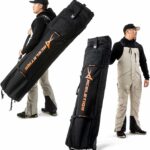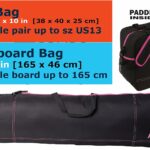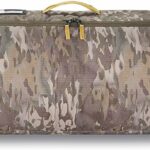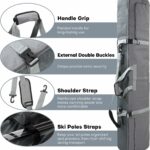You’re home from an exhilarating snowboarding season, still buzzing with the memories of epic moments gliding down snow-clad slopes, and the question may pop into your mind – where should you store your snowboard? This guide aims to give you clear, practical advice on how to effectively store your snowboard so that it remains in the best possible condition for your next adventure. The article explores various options, assessing them based on various considerations like safety, longevity, and access convenience. It’s all about ensuring your cherished snowboard stays in pristine condition, ready for you to conquer the slopes at a moment’s notice.
Understanding Your Snowboard’s Needs
If you’re passionate about snowboarding, then your trusted board is more than just a piece of gear. It’s probably seen you through thrilling downhill adventures and steep learning curves, so it’s only right to give it proper care. One of the crucial things you should know about snowboarding is the importance of storing your board correctly.
Importance of Proper Snowboard Storage
Storing your snowboard correctly when not in use is paramount not just for its maintenance but for its longevity as well. Improper storage can lead to damage like rust, warping, and general wear and tear. Additionally, issues like dampness and temperature changes can compromise its performance, thereby affecting your experience on the slopes.
Considerations about Temperature and Humidity
Factors like temperature and humidity play a significant role in snowboard storage. Extreme fluctuations in temperature can cause the materials in your snowboard to contract and expand, leading to warping. High humidity levels, on the other hand, can encourage rust development on the metal parts of your board.
Ideal Conditions for Snowboard Storage
The ideal conditions for snowboard storage are a consistent, cool temperature and low humidity. These conditions help maintain the form and functionality of your snowboard, ensuring that it’s ready to hit the slopes whenever you are.
In-Home Snowboard Storage
Storing your snowboard at home is a popular choice for many boarders. This often entails creating an appropriate space to ensure your board is kept safe and secure.
Transforming Closets and Basements
Closets and basements can make excellent storage spaces for your snowboard. The idea is to find a spot in your home that experiences minimal temperature fluctuation and is away from dampness or direct sunlight.
Using Wall Mounts or Ceiling Racks
Wall mounts and ceiling racks are also ideal for snowboard storage. These keep your snowboard off the ground, reducing the risk of accidental impacts. Plus, they can also be a cool way to display your board when it’s not in use.
Considering Free-Standing Snowboard Racks
Also, you might want to consider using free-standing snowboard racks. These are practical and can be easily moved around your house. They offer a simple and efficient solution, especially if you own multiple boards.
Preventing Moisture and Temperature Damage at Home
Regardless of where you decide to store your snowboard at home, it’s crucial to protect it from moisture and temperature damage. Tools like dehumidifiers can help control the environment, reducing the risks of rust and warping.
Garage or Shed Storage
Garage or shed storage is another option that offers relative convenience.
Advantages of Garage or Shed Storage
Storing your snowboard in a garage or shed keeps it safely tucked away yet easily accessible. It spares you from transforming your indoor living spaces and allows you to organize your gear efficiently.
Important Considerations for Preventing Rust and Warping
The challenge with garage or shed storage is managing the temperature and humidity levels. It’s crucial to pay careful attention to these factors and employ measures like using rust inhibitors or insulation to maintain optimal conditions.
Setting Up Appropriate Storage System
Creating an appropriate storage system in your garage or shed involves maximizing the available space and ensuring it’s suitable for your snowboard. This can range from using shelves, racks or even custom-built systems to secure your board.
Renting Storage Space for Your Snowboard
If home storage isn’t feasible, you might consider renting a storage space.
Finding Snowboard Storage Solutions in Your Local Area
Many local areas offer specialized storage units for sports equipment like snowboards. They generally have secure facilities and are designed to cater to your board’s specific needs.
Why Climate-Controlled Storage is Necessary
Choosing a climate-controlled storage is crucial as it ensures consistent temperatures and humidity levels, thereby reducing the risk of damage to your snowboard.
Cost Considerations and Weighing Options
While renting storage space does come with a cost, you have to weigh this against the potential repair or replacement expenses that might arise from improper storage. It’s an investment in the long-term well-being of your snowboard.
Purchasing a Snowboard Bag for Safekeeping
Snowboard bags offer an additional layer of protection when storing your snowboard.
Types of Snowboard Bags Available
There’s an array of snowboard bags available in the market, from simple slip-on covers to padded bags with extra compartments for your gear.
Pros and Cons of Snowboard Bags
While snowboard bags do provide protection, they may not offer enough ventilation, which can lead to moisture buildup. It’s essential to ensure your snowboard is completely dry before storing it in a bag.
How to Properly Store a Snowboard in a Bag
Remember to loosen any bindings to avoid putting pressure on certain parts of the board and always store your snowboard flat in the bag to prevent warping.
Properly Cleaning and Prepping Your Snowboard For Storage
Before stowing your snowboard away, it’s essential to clean and prep it properly.
Why Cleaning Your Snowboard is Essential Before Storage
Dirt, salt, and grime can corrode the materials of your snowboard over time. Hence, cleaning your snowboard before storage can significantly enhance its lifespan.
Steps to Clean Your Snowboard
Use lukewarm water and mild soap to clean your snowboard. Then dry it thoroughly, ensuring no moisture is left, as this may lead to rusting.
Applying Wax for Added Protection
Applying a thick coat of wax to your snowboard will protect its base from oxidation and it will also keep the edges from rusting.
Long-Term Vs Short-Term Snowboard Storage
The length of time you plan on storing your snowboard for will affect how you should store it.
Defining Long-Term and Short-Term Storage
Short-term storage refers to periods of a few days or weeks, while long-term storage can span several months or even a full offseason.
Different Conditions and Procedures for Each
Short-term storage mainly involves maintaining a clean, dry snowboard, while long-term storage requires further precautions like waxing the base and loosening the bindings.
When to Opt for Each Type
It’s important to plan whether you will need short-term or long-term storage depending on your snowboarding habits and the weather conditions.
Commercial Snowboard Storage Solutions
If you’re seeking professional help, there are commercial options available.
Options for Professional Snowboard Storage
These include specialized storage providers, snowboarding shops offering storage services, and even some resorts and mountains provide storage options.
What to Look For in a Storage Solution
Ensure the storage provider offers climate-controlled conditions, has secure storage facilities, and maintains your gear properly.
The Cost of Commercial Snowboard Storage
While commercial storage solutions generally bestow greater peace of mind, they come at an elevated cost. It’s essential to balance the cost with the requirements and value of your snowboard.
Avoiding Common Snowboard Storage Mistakes
Understanding common errors while storing your snowboard can help preserve it better.
Mistakes to Avoid When Storing a Snowboard
One mistake is storing a snowboard without cleaning it thoroughly. Also, avoid storing it in a moist, hot, or fluctuating temperature conditions. Storing a snowboard upright or with tighten bindings can also lead to deformation.
How These Mistakes Can Damage Your Snowboard
Each of these mistakes can lead to issues like rust, warping, and general deterioration of your snowboard, hindering its performance and shortening its lifespan.
Tips for Avoiding These Common Errors
Ensure that your snowboard is clean, dry, and waxed before storage. Keep it in a cool, dry location and avoid leaning it against the wall or storing it upright.
Regularly Checking on Your Stored Snowboard
Regularly checking on your stored snowboard is as important as proper storage itself.
Why You Should Frequently Check Your Stored Snowboard
Regular check-ups will help you catch any signs of damage or issues early on, preventing potential deterioration.
What to Look Out for When Checking
Look for any signs of rust, warping, or moisture. If you’ve waxed your board, check if the wax still adequately covers the base.
How Often Should You Check on Your Snowboard
While the frequency of checks depends on your storage conditions and duration, a simple rule is that the longer your snowboard is stored, the more frequently it should be monitored.
In conclusion, storing your snowboard correctly is essential for maintaining its condition and longevity. However you choose to store it, remember: cleanliness, cool temperatures, and low humidity are your snowboard’s best friends for long-term storage.
- What Snowboard Bindings Should I Get? - January 23, 2024
- What Size Screws For Snowboard Bindings? - January 23, 2024
- How To Snowmobile On Water? - January 23, 2024










